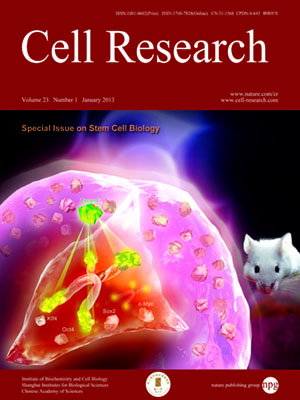
Volume 23, No 1, Jan 2013
ISSN: 1001-0602
EISSN: 1748-7838 2018
impact factor 17.848*
(Clarivate Analytics, 2019)
Volume 23 Issue 1, January 2013: 131-141
ORIGINAL ARTICLES
Stress-mediated p38 activation promotes somatic cell reprogramming
Xinxiu Xu1,2, Quan Wang2, Yuan Long2, Ru Zhang1, Xiaoyuan Wei1, Mingzhe Xing1, Haifeng Gu2 and Xin Xie1,2
1Laboratory of Receptor-based Bio-medicine, Shanghai Key Laboratory of Signaling and Disease Research, School of Life Sciences and Technology, Tongji University, Shanghai 200092, China
2Stake Key Laboratory of Drug Research, the National Center for Drug Screening, Shanghai Institute of Materia Medica, Chinese Academy of Sciences, Shanghai 201203, China
Correspondence: Xin Xie(xxie@mail.shcnc.ac.cn)
Environmental stress-mediated adaptation plays essential roles in the evolution of life. Cellular adaptation mechanisms usually involve the regulation of chromatin structure, transcription, mRNA stability and translation, which eventually lead to efficient changes in gene expression. Global epigenetic change is also involved in the reprogramming of somatic cells into induced pluripotent stem (iPS) cells by defined factors. Here we report that environmental stress such as hyperosmosis not only facilitates four factor-mediated reprogramming, but also enhances two or one factor-induced iPS cell generation. Hyperosmosis-induced p38 activation plays a critical role in this process. Constitutive active p38 mimics the positive effect of hyperosmosis, while dominant negative p38 and p38 inhibitor block the effect of hyperosmosis. Further study indicates stress-mediated p38 activation may promote reprogramming by reducing the global DNA methylation level and enhancing the expression of pluripotency genes. Our results demonstrate how simple environmental stress like hyperosmosis helps to alter the fate of cells via intracellular signaling and epigenetic modulation.
Cell Research (2013) 23:131-141. doi:10.1038/cr.2012.143; published online 9 October 2012
FULL TEXT | PDF
Browse 3577


